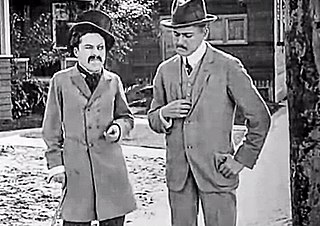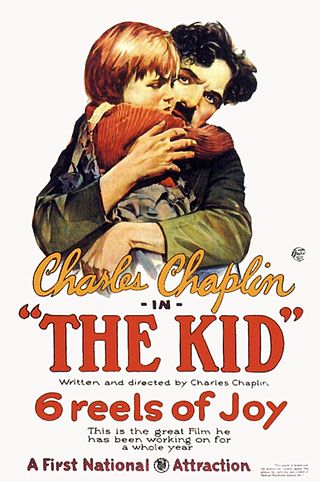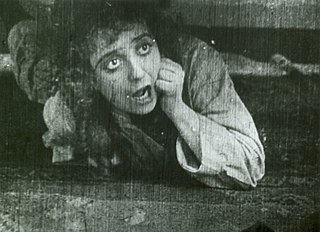The history of film chronicles the development of a visual art form created using film technologies that began in the late 19th century. The advent of film as an artistic medium is not clearly defined. However, the commercial, public screening of ten of the Lumière brothers' short films in Paris on 28 December 1895, can be regarded as the breakthrough of projected cinematographic motion pictures. There had been earlier cinematographic results and screenings by others, like the Skladanowsky brothers, who used their self-made Bioscop to display the first moving picture show to a paying audience on 1 November 1895, in Berlin, but they had neither the quality, financial backing, stamina, or luck to find the momentum that propelled the cinématographe Lumière into worldwide success. Those earliest films were in black and white, under a minute long, without recorded sound, and consisted of a single shot from a steady camera. The first decade of motion pictures saw film move from a novelty to an established mass entertainment industry, with film production companies and studios established all over the world.

Voice-over is a production technique where a voice—that is not part of the narrative (non-diegetic)—is used in a radio, television production, filmmaking, theatre, or other presentations. The voice-over is read from a script and may be spoken by someone who appears elsewhere in the production or by a specialist voice actor. Synchronous dialogue, where the voice-over is narrating the action that is taking place at the same time, remains the most common technique in voice-overs. Asynchronous, however, is also used in cinema. It is usually prerecorded and placed over the top of a film or video and commonly used in documentaries or news reports to explain information.

The Great Dictator is a 1940 American anti-war political satire black comedy film written, directed, produced, scored by, and starring British comedian Charlie Chaplin, following the tradition of many of his other films. Having been the only Hollywood filmmaker to continue to make silent films well into the period of sound films, Chaplin made this his first true sound film.

City Lights is a 1931 American silent romantic comedy-drama film written, produced, directed by, and starring Charlie Chaplin. The story follows the misadventures of Chaplin's Tramp as he falls in love with a blind girl and develops a turbulent friendship with an alcoholic millionaire.

The fourth wall is a performance convention in which an invisible, imaginary wall separates actors from the audience. While the audience can see through this "wall", the convention assumes the actors act as if they cannot. From the 16th century onward, the rise of illusionism in staging practices, which culminated in the realism and naturalism of the theatre of the 19th century, led to the development of the fourth wall concept.

The Circus is a 1928 silent romantic comedy film written, produced, and directed by Charlie Chaplin. The film stars Chaplin, Al Ernest Garcia, Merna Kennedy, Harry Crocker, George Davis and Henry Bergman. The ringmaster of an impoverished circus hires Chaplin's Little Tramp as a clown, but discovers that he can only be funny unintentionally.

The Essanay Film Manufacturing Company was an early American motion picture studio. The studio was founded in 1907 in Chicago, and later developed an additional film lot in Niles Canyon, California. Its various stars included Francis X. Bushman, Gloria Swanson and studio co-owner, actor and director, Broncho Billy Anderson. It is probably best known today for its series of Charlie Chaplin comedies from 1915-1916. In late 1916, it merged distribution with other studios and stopped issuing films in the fall of 1918. According to film historian Steve Massa, Essanay is one of the important early studios, with comedies as a particular strength. Its founders, George Kirke Spoor and Anderson, were subsequently awarded special Academy Awards for pioneering contributions to film.

The Tramp, also known as the Little Tramp, was English actor Charlie Chaplin's most memorable on-screen character and an icon in world cinema during the era of silent film. The Tramp is also the title of a silent film starring Chaplin, which Chaplin wrote and directed in 1915.
Diegesis is a style of fiction storytelling which presents an interior view of a world in which the narrator presents the actions of the characters to the readers or audience.

German expressionist cinema was a part of several related creative movements in Germany in the early 20th century that reached a peak in Berlin during the 1920s. These developments were part of a larger Expressionist movement in north and central European culture in fields such as architecture, dance, painting, sculpture and cinema.

Dracula is a 1931 American pre-Code supernatural vampire film directed and co-produced by Tod Browning from a screenplay written by Garrett Fort and starring Bela Lugosi in the title role. It is based on the 1924 stage play Dracula by Hamilton Deane and John L. Balderston, which in turn is adapted from the 1897 novel Dracula by Bram Stoker. Lugosi portrays Count Dracula, a vampire who emigrates from Transylvania to England and preys upon the blood of living victims, including a young man's fiancée.

Making a Living is the first film starring Charlie Chaplin. A one-reel comedy short, it was completed in three days at Keystone Studios in Los Angeles, California and was released for distribution on February 2, 1914. In it Chaplin portrays a charming swindler who runs afoul of a news reporter and a Keystone Cop. In addition to co-writing the "scenario" and directing the production, Henry Lehrman performs as the principal supporting character.

The Kid is a 1921 American silent comedy-drama film written, produced, directed by and starring Charlie Chaplin, and features Jackie Coogan as his foundling baby, adopted son and sidekick. This was Chaplin's first full-length film as a director. It was a huge success and was the second-highest-grossing film in 1921. Now considered one of the greatest films of the silent era, in 2011 it was selected for preservation in the United States National Film Registry by the Library of Congress.

Dwight Iliff Frye was an American character actor of stage and screen. He is best known for his portrayals of neurotic, murderous villains in several classic Universal horror films, such as Renfield in Dracula (1931) and Fritz in Frankenstein (1931).

Dracula's Daughter is a 1936 American vampire horror film produced by Universal Pictures as a sequel to the 1931 film Dracula. Directed by Lambert Hillyer from a screenplay by Garrett Fort, the film stars Otto Kruger, Gloria Holden in the title role, and Marguerite Churchill, and features, as the only cast member to return from the original, Edward Van Sloan – although his character's name was altered from "Van Helsing" to "Von Helsing".

Dracula is a 1931 Spanish-language American horror film directed by George Melford. The film is based on both the novel Dracula by Bram Stoker and the play Dracula by Hamilton Deane and John L. Balderston. The film is about Renfield, who travels to Translyvania to visit Conde Drácula. He is drugged by the Count and becomes his minion. The two travel to England, where Drácula begins to seduce Lucía Weston as she becomes his first victim. This leads to Professor Van Helsing to investigate, who confirms that Drácula is a vampire.

Mabel's Strange Predicament is a 1914 American film starring Mabel Normand and Charles Chaplin, notable for being the first film for which Chaplin donned the costume of The Tramp, although his appearance in the costume in Kid Auto Races at Venice was released first. The film was directed by Normand and produced by Mack Sennett.

A film – also called a movie, motion picture, moving picture, picture, photoplay or (slang) flick – is a work of visual art that simulates experiences and otherwise communicates ideas, stories, perceptions, feelings, beauty, or atmosphere through the use of moving images. These images are generally accompanied by sound and, more rarely, other sensory stimulations. The word "cinema", short for cinematography, is often used to refer to filmmaking and the film industry, and the art form that is the result of it.

The representation of gender in horror films, particularly depictions of women, has been the subject of critical commentary.
A Gothic film is a film that is based on Gothic fiction or contains Gothic elements. Since various definite film genres—including science fiction, film noir, thriller, and comedy—have used Gothic elements, the Gothic film is challenging to define clearly as a genre. Gothic elements have also infused the horror film genre, contributing supernatural and nightmarish elements. To create a Gothic atmosphere, filmmakers have sought to create new camera tricks that challenge audiences' perceptions. Gothic films also reflected contemporary issues. A New Companion to The Gothic's Heidi Kaye said "strong visuals, a focus on sexuality and an emphasis on audience response" characterize Gothic films like they did the literary works. The Encyclopedia of the Gothic said the foundation of Gothic film was the combination of Gothic literature, stage melodrama, and German expressionism.
















